5. The Incredible Shrinking Man (1957)
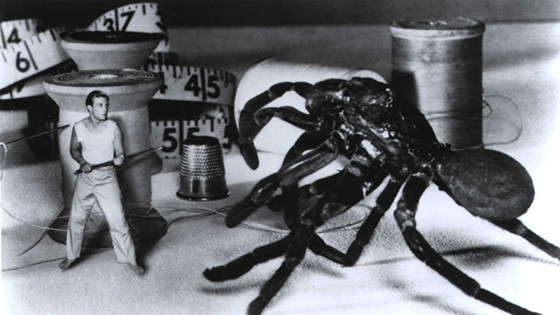
Director Jack Arnold’s The Incredible Shrinking Man is an unexpectedly great speculative tale that proves to be an existential treatise, deftly adapted by Richard Matheson from his own 1956 novel.
Scott Carey (Grant Williams) is accidentally exposed to a radioactive cloud of pesticides while on a yachting trip. At first nothing seems amiss, but several months later Scott realizes that he’s inexplicably shrunk in height by several inches. Doctors are baffled as Scott continues to shrink, and he becomes hostile and upset, lashing out at Louise (Randy Stuart), his hapless wife. Fearing that a cure will never be found, Scott becomes a national sensation, but uncertainty reigns.
Having retained his identity as he shrinks to subatomic sizes, fearful that he’d vanish into non-existence, Scott concludes: “Smaller than smallest, I meant something too. To God there is no zero. I still exist!”
The Incredible Shrinking Man poses a number of fascinating philosophical and scientific questions, and while the special effects are still charming and effective, it’s the devastating collapse of Scott’s marriage that makes the film a truly unsettling tragedy. Highly recommended.
4. Shivers (1975)
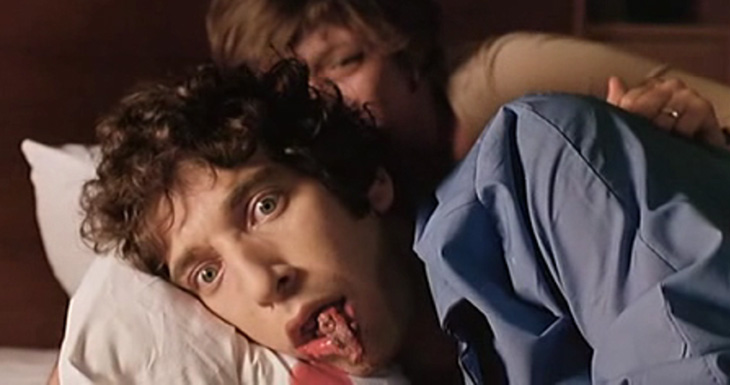
Originally titled “Orgy of the Blood Parasites,” this sensationalistic fright flick from Canada’s own Baron of Blood, David Cronenberg, concerns a misguided scientist after “a combination of aphrodisiac and venereal disease that will hopefully turn the world into one beautiful, mindless orgy,” but instead lets loose a deadly parasite within a Montreal apartment complex whose residents, as a result, turn into sex-crazed murderous psychopaths.
Eschewing the experimental nature and microbudget of his earlier works, Shivers marks Cronenberg’s first commercial feature and stigmatized him as something of “an atrocity” thanks to Saturday Magazine’s Robert Fulford. Fulford –– an uptight hack, let’s be honest –– paid unwarranted and deeply damaging lip service towards the filmmaker, dubbing Cronenberg “a disgrace to taxpayers” as the film was funded via CFDC (Canadian Film Development Corporation) financing via his notorious and widely circulated article entitled “You Should Know How Bad This Movie Is, You Paid For It.”
This regrettable and wholly unnecessary incident made it terribly challenging for Cronenberg’s following features to secure funding, even though Shivers banked decent box-office and was reasonably well-received, particularly amongst horror fans, auteur-admiring critics, and genre publications. Fulford was mostly trying to make a name for himself, and today, depending on who you ask, the only name he garnered was “jealous asshole.” Pfft. Shivers is the shit.
3. The Fury (1978)
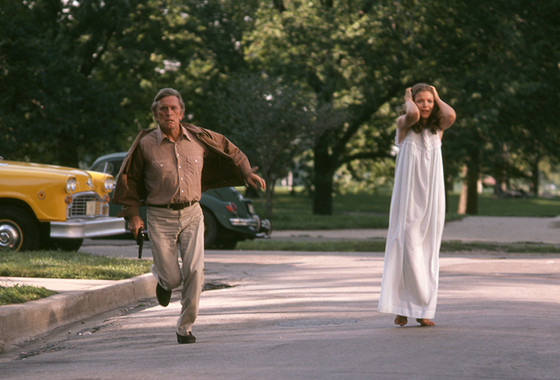
For a time in the mid-1970s it seemed like director Brian De Palma’s name was synonymous with “supernatural thriller” and admittedly The Fury had more than a few similarities to his 1976 prestige horror sensation Carrie.
Both films feature a telekinetic teen (Amy Irving in The Fury, who also had a smaller role in Carrie) along with outbursts of startling and stylish violence and rampage. Championed by Pauline Kael who raved that “[The Fury] is so visually compelling that a viewer seems to have entered a mythic night world; no Hitchcock thriller was ever so intense, went so far, or had so many ‘classic’ sequences.”
Based on a screenplay by John Farris which he adapted from his own 1976 novel, The Fury follows the clairvoyant son (Andrew Stevens) of government agent, Peter Sandza (Kirk Douglas), and a top secret project that uses a group of young clairvoyants’ powers for the government’s morally suspect espionage activities.
This project is headed by the ruthless Ben Childress (John Cassavetes) who will eventually get his comeuppance in a gleefully overdone sequence that Kael called “…the greatest finish for any villain ever. One can imagine Welles, Peckinpah, Scorsese, and Spielberg still stunned, bowing to the ground, choking with laughter.”
Also notable is John Williams’s highly effective score and also the big screen debut of Daryl Hannah, Laura Innes, and Dennis Franz, the latter of which would go on to appear in four more De Palma pictures.
2. Altered States (1980)
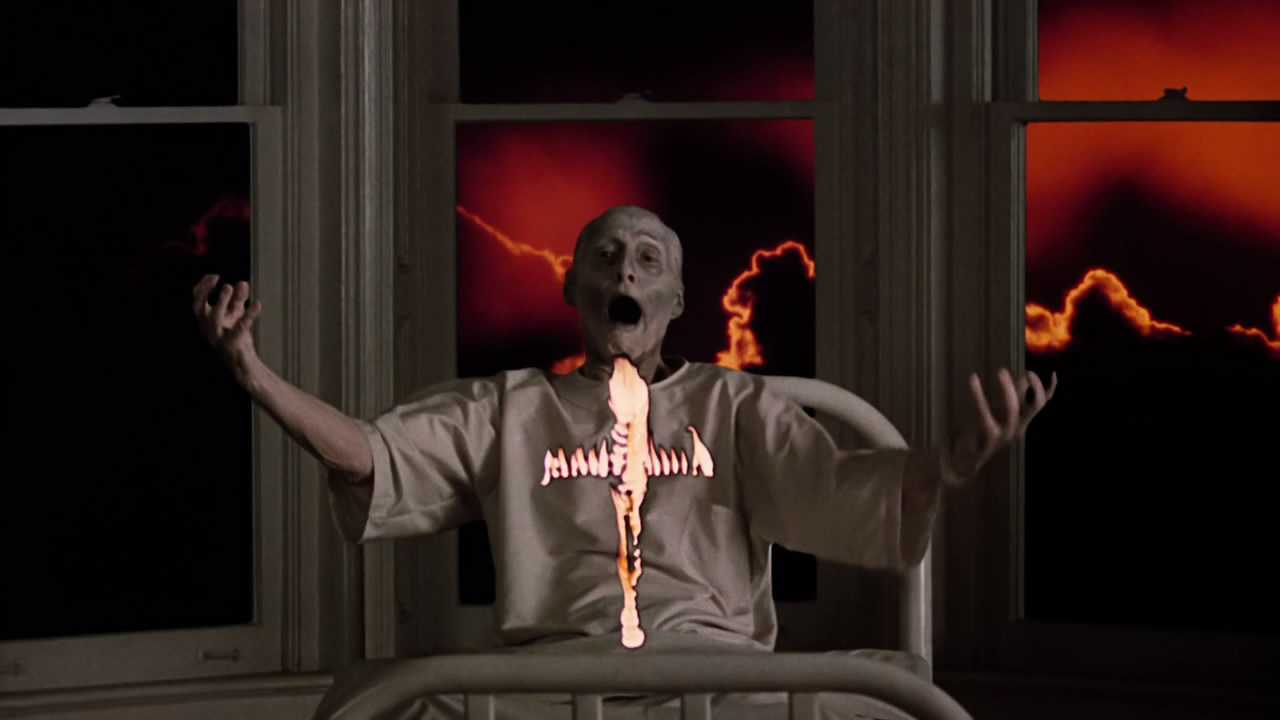
“[Altered States is] a methodically paced fireworks display, exploding into delirious special-effects sequences at regular intervals, and maintaining an eerie calm the rest of the time,” declared The New York Times esteemed Janet Maslin back in 1980, concluding that the film’s “strangeness, which borders cheerfully on the ridiculous, is its most enjoyable feature.”
Director Ken Russell used Paddy Chayefsky’s 1978 novel, itself inspired by famed neuroscientist and psychonaut John C. Lilly, for this captivating tale of deprivation research conducted in isolation tanks while under the influence of psychoactive drugs (namely ketamine, LSD, and mescaline).
Edward Jessup (William Hurt, in his feature film debut) is a psychology prof and respected scientist who uses powerful hallucinogenic drugs while in sensory deprivation tanks, utterly convinced that it will help him to unlock the different and “altered states” of consciousness.
What begins as a successful series of experiments soons slips from Jessup’s grasp as reality and his grip on it, slips away with bone-chilling and mind-bending results.
Also notable for the film debut of a young Drew Barrymore, Altered States remains one of Russell’s most quintessential films, full to burst with eroticism, comedy, excessive violence, and strange but stirring ideas about the mind and our own mental perceptions. Don’t miss it.
1. The Village of the Damned (1960)
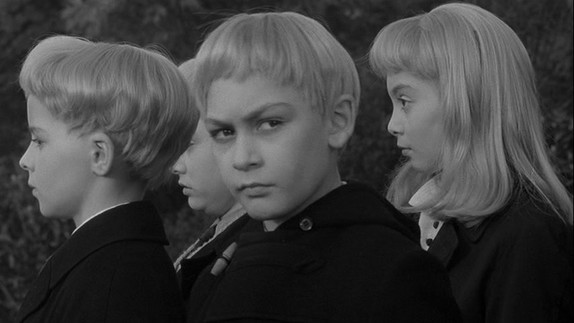
Adapted from the 1957 John Wyndham novel “The Midwich Cuckoos”, Wolf Rilla’s 1960 sci-fi horror classic Village of the Damned, is an impressive, paranoia-addled ephebiphobic freak out.
Arguably a film of such stature needn’t top a list of little seen pictures, but the sad truth is that a lot of modern film goers haven’t been bold, daring, or adventurous enough to go back to the source and see this incredible film freak-out.
Set in the bucolic British village of Midwich, a mysterious and inexplicable instance occurs wherein everyone collectively blacks out for six hours. When everyone comes to it’s discovered that all women and girls of child-bearing age are pregnant and then, seven months to the day, the children are simultaneously born.
Growing at an abnormal rate, these children––who all have a similar ashen appearance, spooky white-blonde hair, and correspondingly ghoulish illumined eyes––remain creepily calm and seemingly devoid of emotion, and soon show signs of vast psychic abilities. Capable of reading the adults’ minds, the children are also able to control and manipulate them mentally into acts of terrible self-harm.
A classic of British horror (a sequel, a remake, and countless parodies have followed), Village of the Damned’s children have come to represent iconic figures of mind-controlling and diabolical evil. “A brick wall… a brick wall… I must think of a brick wall… a brick wall…”
Author Bio: Shane Scott-Travis is a film critic, screenwriter, comic book author/illustrator and cineaste. Currently residing in Vancouver, Canada, Shane can often be found at the cinema, the dog park, or off in a corner someplace, paraphrasing Groucho Marx. Follow Shane on Twitter @ShaneScottravis.